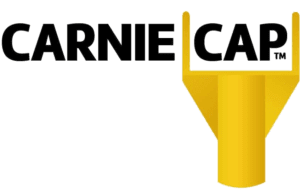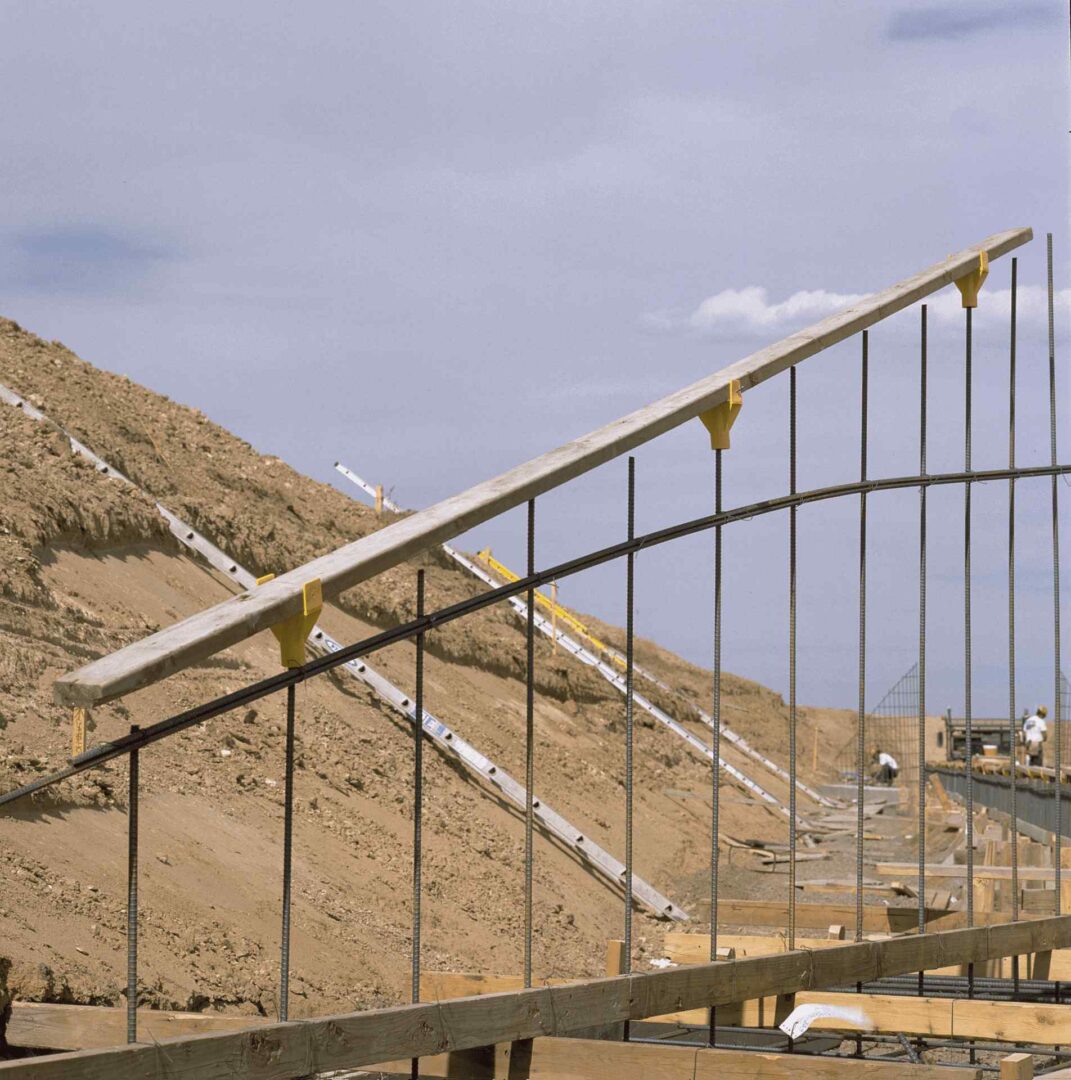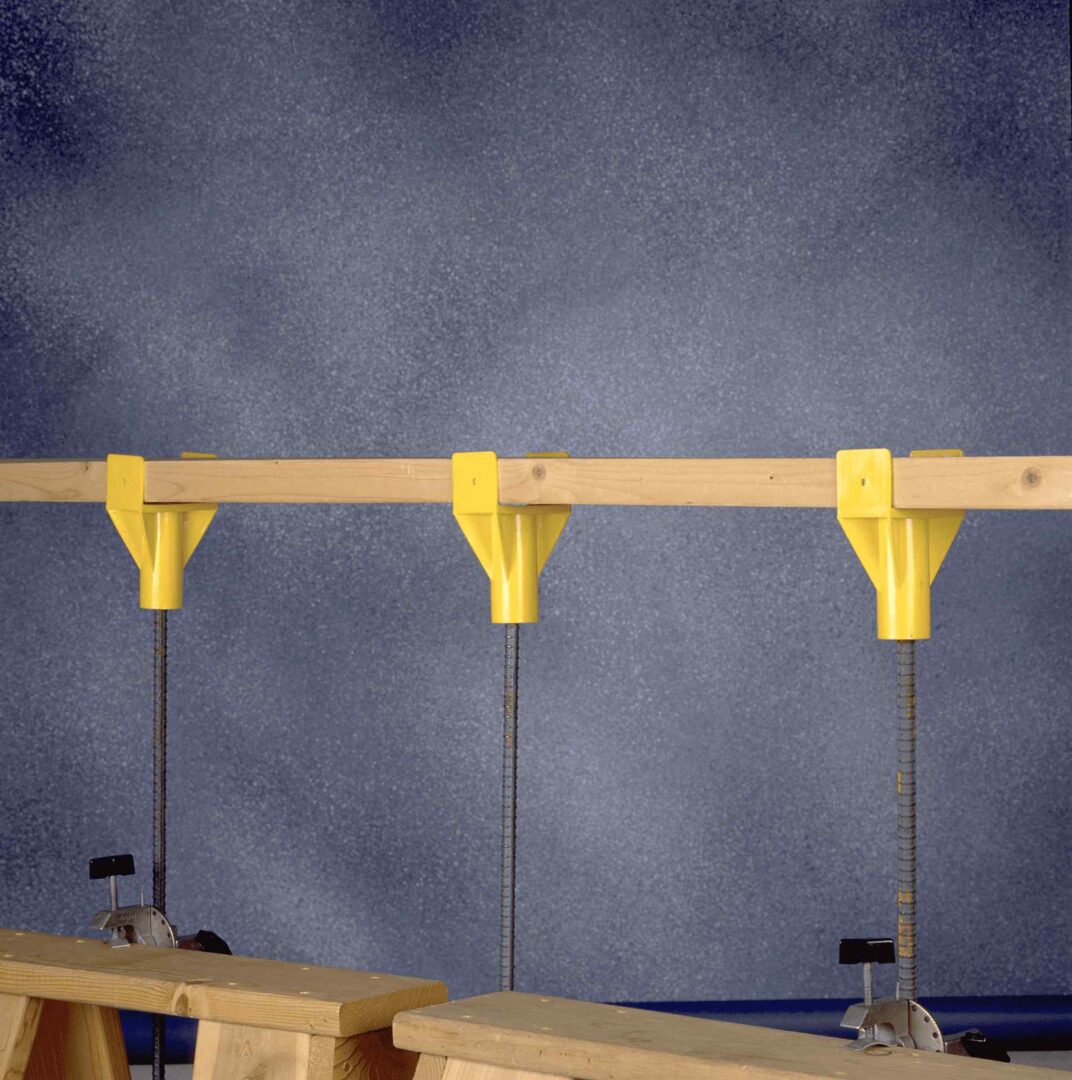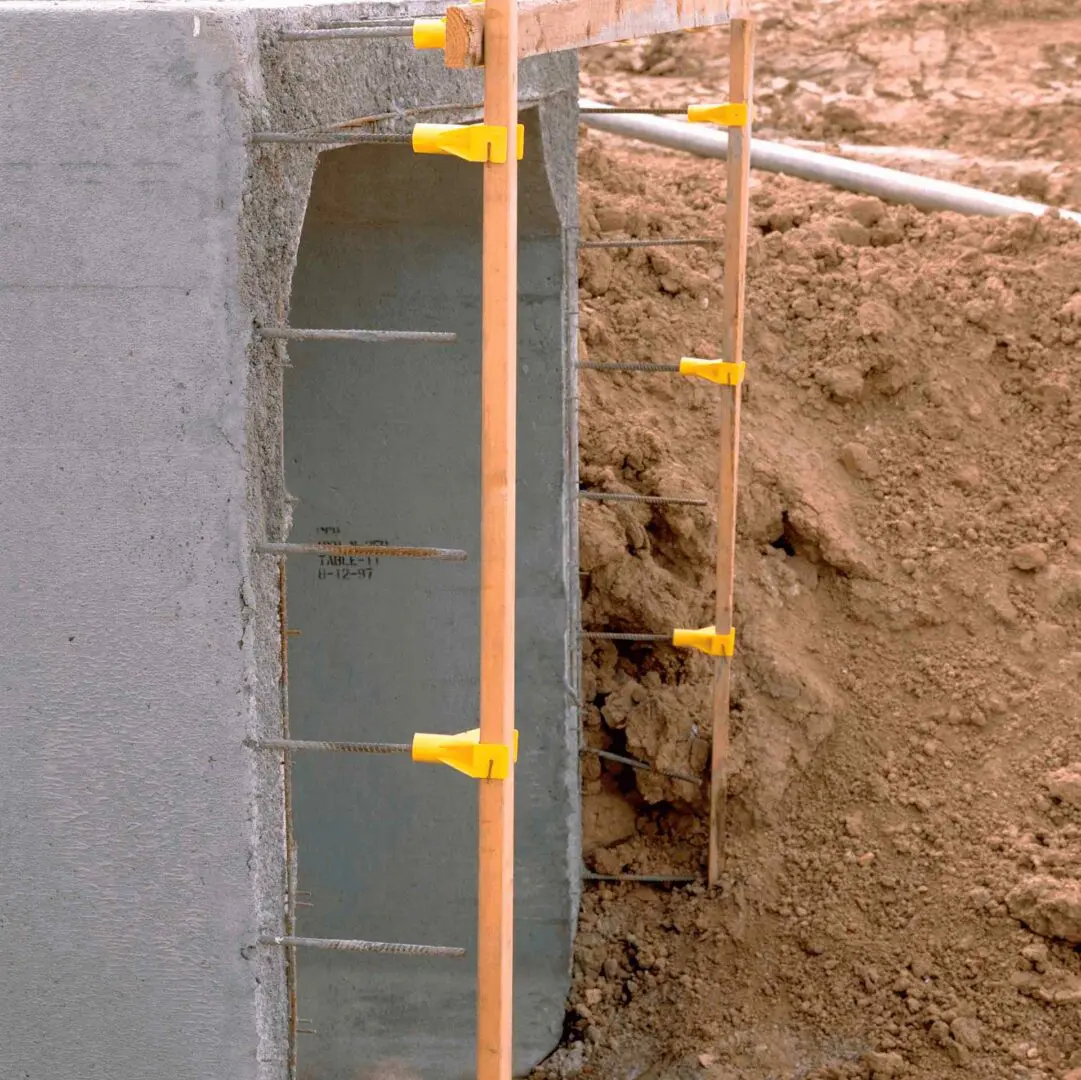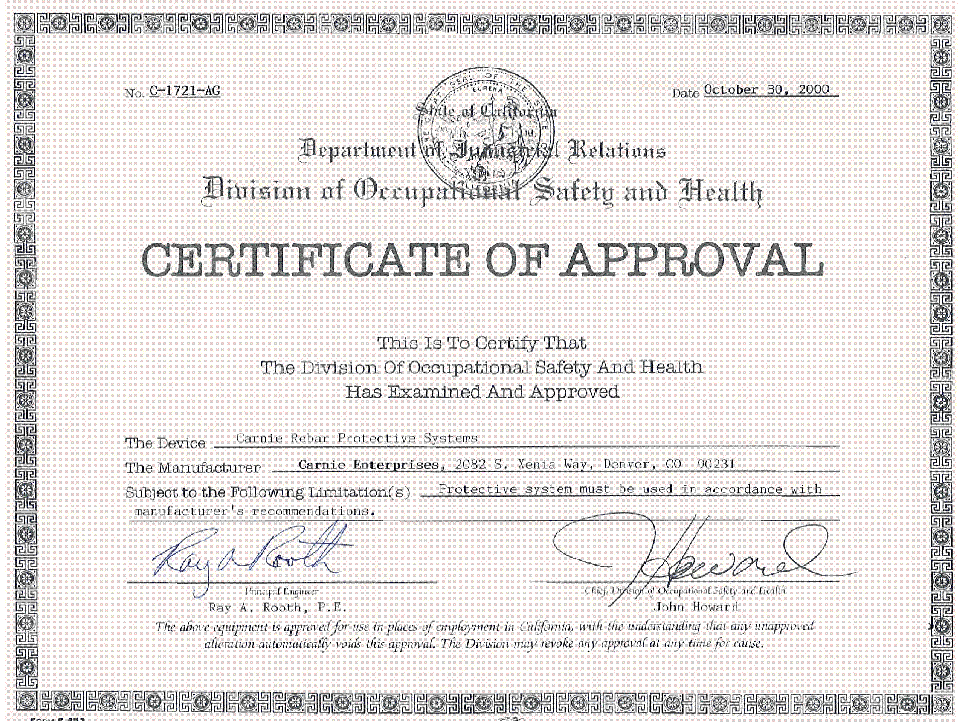CARNIE CAP™ REBAR GUARD WARNINGS AND INSTALLATION INSTRUCTIONS
Read These Warnings Before Using The Carnie Cap™!
- Before the use of this system read and understand all instructions, warnings, cautions, and notes marked on the equipment and contained in these WARNINGS AND INSTRUCTIONS.
- The CARNIE CAP™ is designed and tested only as a system. The system includes the CARNIE CAPS™ (Standard size Model #C-100 for #4 to #9 rebar and large size Model #CC-200 for #5 to #16 rebar), pieces of lumber which are commonly found, construction grade fir 2" x 4"s, 4" x 4"s. (nominal) (for use with the Model CC-100) and 2" x 6"s (nominal) (for use with Model CC-200), lumber, nails, and common rebar. Other uses with different components should be tested if employers intend to rely on the device for the safety of the employees. (Note: In California, 2 pieces of the 2" lumber were tested nailed together to create a 4" nominal thickness. This thickness is now the CAL-OSHA standard when using CARNIE CAPS™)
- Use of components that have not been designed and/or tested for use with this system can be dangerous and lead to injury or death. Contact Carnie Cap, Inc. if you are unsure about using an equivalent product.
- The CARNIE CAP™ is not a fall protection device. It is used as part of a total system to prevent impalement on rebar when a worker falls. Additional fall protection or positioning devices should be used to prevent falls to the level of the rebar.
- The CARNIE CAP™ system has been tested to resist a 250-pound sandbag dropped 10 feet directly onto the top of the lumber. The system should not be relied upon to protect a heavier worker falling from this height or any worker falling from a higher point. Note: CAL-OSHA does not allow falls greater than 7.5 feet. Consult your state or federal OSHA plan for other limitations.
- Treat the CARNIE CAP™ system with respect. Your life is on the line! Use care when moving, shipping or storing CARNIE CAPS™. Use only CARNIE CAPS™ in good condition, and lumber and nails without defects or weaknesses. If damage from the use or rough handling, remove from service. If there is any doubt, remove from service and call for advice from Carnie Cap, Inc.
- Failure to install, use and/or remove CARNIE CAP™ equipment in a safe manner by skilled and trained craftsmen can result in serious injury or death. Until the CARNIE CAP™ is properly installed, use alternate fall protection means. Ask your supervisor for proper training.
- The CARNIE CAP™ System is a single-use item. Any CARNIE CAP™ system or component part of a system that is involved in arresting a fall, or if the system is struck by a weight, shall be removed from service immediately and discarded. The damaged CARNIE CAP™ may be returned to Carnie Cap, Inc. for inspection.
- The CARNIE CAP™ system was tested on rigidly supported #4 rebar. The CARNIE CAP™ Model CC-100 is designed to fit on rebar from #4 to #9 and Model #CC-200 is designed for rebar from #5 to #16. Use on rebar that is smaller or unsupported could have different results. Use on larger rebar could cause permanent damage to the CARNIE CAP™. Some deformation to the rebar is possible when a fall occurs. Carnie Cap, Inc. cannot be responsible for the stability or quality of the structure that the CARNIE CAP™ system is mounted on or for consequential damages to the structure from the effects of the fall. Note: Destruction and/or deformation of the wood, the CARNIE CAPS™ and possibly the rebar is expected and is a natural consequence as part of the deflection and absorption of the impact forces.
- This device does not guarantee your safety. Carnie Cap, Inc. and its agents or distributors do not guarantee that no injury will occur if a person falls onto the CARNIE CAP™ System while working above or adjacent to this unit. Use of this device is only expected to reduce the likelihood of serious injury and limit the penetration of the rebar into a person’s body if a fall occurs. Other means should be considered to limit the likelihood of a fall as well, which may include but are not limited to fall arrest and fall positioning equipment, scaffolds, guardrails, nets, man lifts, ladders, ramps, aerial lifts, and others. Risks inherent to falling onto a 2" x 4", 4' x 4' or 2" x 6" lumber, plastic caps, and to the ground from heights are assumed entirely by the user and the employer of the users. The employer has a non-delegable duty to provide a safe workplace. The CARNIE CAP™ system and other methods may be considered to minimize the injury inherent in the construction trades and while around construction operations. This system meets the requirements of CAL OSHA and Federal OSHA for Rebar Protection at the time of this publication and sale. (CAL OSHA # C-1721-AG.)
- Do not use CARNIE CAPS™ until you have been fully trained and understand the device, the warnings, and the instructions. If you have any questions regarding the safe installation, use or removal of CARNIE CAPS™ or the CARNIE CAP™ system or need additional instructions to call Carnie Cap, Inc. between 8 am and 5 pm CST at (309) 736-9752.
WARRANTY NOTICE AND DISCLAIMER
The product is only warranted to be free from material manufacturing defects at the time it is produced and shipped. Based on the variety of conditions and the variables for the use of this product, the Manufacturer, and its sellers, agents, successors and assigns make no warranties or guarantees expressed or implied, including but not limited to warranties for fitness for purpose, merchantability, marketability, or performance, or for level of protection offered. These instructions and warnings are purely advisory, and they and the product are intended for the purpose of assisting the client in loss control, safety, and risk management procedures. Implementation and use of the CARNIE CAP™ system as a part of the user’s total loss control and safety program, and/or compliance with suggestions and recommendations made or offered by Carnie Cap, Inc. or its agents, and proper and lawful use of any information given by them, is the sole responsibility of the user. The user, by using this product, agrees that it has the sole responsibility for the decision to use the product for protection and accepts the limitations of the product as described herein and in available test reports. If the user does not agree, they are advised to not use the product and return it postage paid for a prompt full refund.
